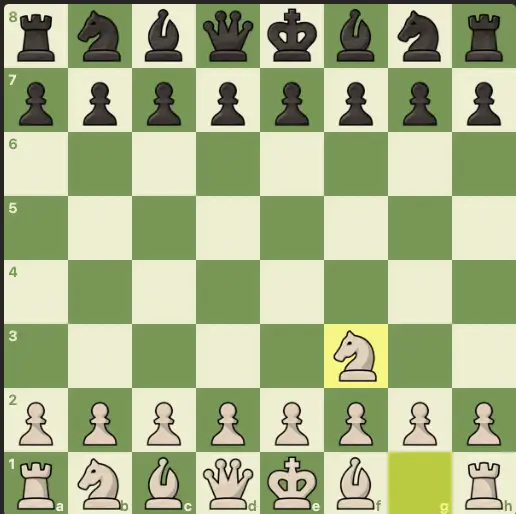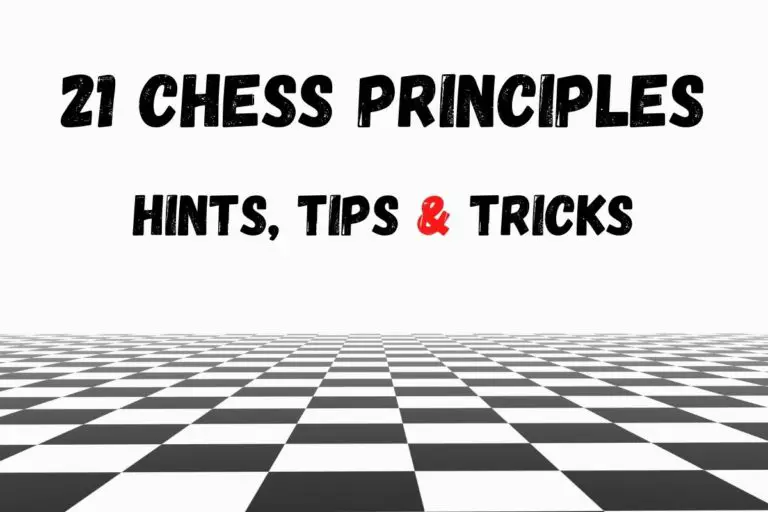Reti Opening in Chess: Moves and Defense for the 1. nf3 Opening
⭐⭐⭐ Take 4 minutes to read and improve your chess game ➡️ : This article was first published on, and is Copyright of Chessquestions.com
The Reti opening in chess was, even by its creator Richard Reti in the 19th century, considered an inferior opening to more traditional 1. e4 openings. On that basis, it is hard to consider it as a simple opening and easy for beginners. You will have to be clever in relinquishing initial centerboard control to the black pieces, but it is despite this, easier to remember the moves as it has fewer lines than most chess openings. So let’s find out more about the Reti system
The Reti opening in chess is popular among intermediate and advanced chess players primarily and sees white open with 1. nf3 and whilst that might be some people’s distinction of the opening, it truly isn’t the Reti until black plays 1…d5 and white has played 2. c4.
Read on for more information on the Reti opening, how and why you should try to learn the moves, and how to identify when it is being played against you and how to defend against it in the best possible way.
The Reti Opening
Let’s take a look at why we should consider the Reti system as a way to mix things up from time to time when playing first with the white pieces.
Pros and Cons of Reti Opening
There is no perfect opening and with any system comes pros and cons to be aware of and prepare for.
Pros
- Flexible opening
- Develops and controls c5
- Early castle opportunities
Cons
- Blacked f-pawn
- Lost the d4 square control
- Black central control options
Chess.com says the Reti is 1. nf3
There is some disagreement about how the Reti is really classified in chess opening theory.
chess.com doesn’t actually state 1. nf3 as the Reti, explicitly, rather that it is sometimes referred to as the Zukertort Opening, but that when 1…d5 is played, and then 2. c5, this becomes the Reti gambit. which isn’t really a gambit at all as the black pawn can be won back easily within a couple of moves, but still..
It would be easy to state that 1. e4 is a Ruy Lopez, but that would be incorrect, it is the first move of the Ruy Lopez but is also the first move of the Vienna Game too, so can not be classified as an opening all of its own. Similarly, the 1. nf3 opening could be transposed to another, but once 2. c4 is played, especially if a gambit after 1…d5 you have a real Reti opening on your hands.
That’s a little sticky point out of the way, the debate will continue and in all honesty, there is no right or wrong in the situation, but each to their own. Just read on to find out more moves and the simple lines to master the Reti system and what to do about the absence of those central pawns.

Use the Reti Opening to Confuse Your Opponent
Black always expect white to play 1. e4, the instant this is not the first move puts black on the back-foot as they try to figure out what you are doing.
Using a distinct move order, you may perplex your opponent. Even if you have a specific set-up in mind which of course you do, ‘The Reti’., the move order beyond the knight and first pawn advance is not set thus not giving your strategy away immediately makes it more difficult for your opponent to figure out where you want to go and pick lines that you don’t want to face.
The goal of the Reti system is to displace your opponent’s pieces by not immediately attacking for the middle. Your opponent is confused and may make some moves away from the center, so whilst you are setting up the flanks, the center remains open to which you can transpose and also control.
White can castle early, protect and battle for central control whilst occupying some flank outposts too.
Despite being relatively simple, it can take some learning but will be super effective when a chess master.
Basic Reti Moves and Lines to Learn
All you really need to know about the Reti opening is to play 1. nf3 and 2. c5 and you’re done!
if your opponent has played 1…d5 then you are playing the gambit but it’s a no-risk gambit in reality as black weakens its early position if accepting and is better to support the pawn with 2. c6 or 2…e6, which transposes to the English opening anyway.
Reti Opening Traps
In this trap, the Reti does not require the 2. c5 move at all as focus comes on a kingside fianchetto and an early castle.
From here, white can create some ridiculously devastating traps to crush black including the use of the Kingside bishop which is now primed on blacks queenside rook diagonal, and the easiest way for these to be explained is to watch this short video and you’ll see how the Reti opening ignoring 2. c5 can be such a solid opening.
Defending against the Reti
So now you know how to play and attack with the Reti it would make perfect sense to have some knowledge as to how to defend and counter it, as you can identify white making a Reti attempt when you are playing the black pieces.
How do you respond to the Reti Opening
The best response to the Reti opening once white has played 1. nf3 is to play the queen’s pawn d5. A true Reti, white should play 2. c4 in the Reti gambit, which should be declined. White will have no trouble in leveling things up in winning that capturing the pawn.
What does 1. nf3 mean in chess?
So if you arrived on this page looking for more information and how to play the Reti opening, you almost certainly already know what 1. nf3 means in chess, if not and you have remarkably arrived looking for the answer to the question, let’s break it down for you
First when you read 1. nf3, what you are reading is something called algebraic notation. It is not really algebra, but is described as such and is a system used to record moves in a chess game.
In full, 1. nf3 means the white knight has made the first move of the game by moving to the f3 square on the Kingside. ‘1. ‘ is the first move. ‘n’ is the abbreviation for the knight* and f3 is a coordinate on the board referring to the third rank on the f file.
*Yes, we know ‘Knight’ begins with “K” but that is saved for the ‘King’ understandably.






